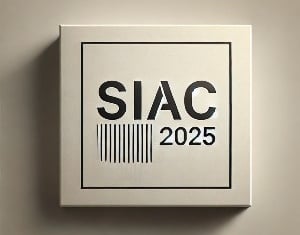The Revamped SIAC Rules 2025: Key Reforms and Legal Implications
LEGAL INSIGHTS
Dipendra Singh Solanki
2/27/20256 min read


Introduction
On December 9, 2024, the Singapore International Arbitration Centre (‘SIAC’) unveiled the seventh edition of its arbitration rules, known as the 2025 Rules, which became effective on January 1, 2025. These rules represent a significant advancement in arbitration practices, aiming to modernize the framework, address contemporary challenges, and enhance procedural efficiency. Notably, the 2025 Rules introduce the SIAC Gateway, a centralized electronic case management system designed to streamline written communications and document delivery. In this article, we examine the key changes introduced in the 2025 Rules and discuss their practical implications for practitioners and SIAC users.
New Definitions (Rule 02)
The SIAC Rules 2025 have incorporated updated definitions, including terms such as "additional party," "amount in dispute," "Claimant," "Direct Economic Interest," "Emergency Arbitrator," "party or parties," "Practice Notes," "Respondent," "Schedule of Fees," "Schedule," "SIAC Gateway," "SIAC Secretariat," "third party funder," and "third party funding agreement." These definitions provide clarity and structure to the arbitration process, ensuring precision in the application of rules and procedures under the Singapore International Arbitration Centre framework.
Digital Case Management System - SIAC Gateway (Rule 04)
The SIAC Rules 2025 introduce the "SIAC Gateway," a digital case management system designed to streamline arbitration proceedings. This platform enables parties to securely upload filings, documents, and communications, enhancing efficiency and transparency in the administration of cases under the Singapore International Arbitration Centre framework.
Emergency Arbitration (Rule 12 with Schedule 01)
A notable enhancement in the 2025 Rules is the introduction of Protective Preliminary Orders (‘PPOs’) within the Emergency Arbitration framework. PPOs allow parties to seek urgent interim relief on an ex parte basis—without prior notice to the opposing party—aiming to prevent actions that could undermine the effectiveness of the requested relief, such as asset dissipation or evidence tampering. Upon receiving a PPO application, an Emergency Arbitrator is appointed and required to decide on the request within 24 hours, provided that notice of arbitration is issued within seven (07) days. The applicant must then provide all relevant case documents to the respondent within 12 hours of the order's transmission; failure to do so results in the PPO expiring three days after issuance.
Streamlined Procedures (Rule 13 read with Schedule 02)
The Streamlined Procedure is designed for low-value disputes of up to SGD 1 million that are low in complexity. Parties may opt for this procedure at any time before the tribunal is constituted. Alternatively, it applies by default unless the President, upon a party's application, determines otherwise. Under this procedure, the tribunal must render an award within three months of its constitution. Additionally, tribunal and SIAC fees are capped at 50% of the maximum limits specified in the Schedule of Fees.
Expedited Procedures (Rule 14 read with Schedule 03)
The Expedited Procedure is designed to ensure the swift resolution of disputes. For cases where the claim amount ranges between SGD 1 million and SGD 10 million, parties can choose to apply this procedure. Under the expedited rules, the tribunal is required to issue an award within six months of its constitution.
Coordinated Procedures (Rule 17)
Coordinating multiple arbitrations where the identical tribunal has been constituted, but the proceedings have not been consolidated. If a common question of law or fact arises in such arbitrations, a party may request the tribunal to issue a ruling to streamline the proceedings. The tribunal may order the arbitrations to be conducted concurrently or sequentially, heard together, suspended pending the outcome of another arbitration, or procedurally aligned to enhance efficiency. Despite this coordination, each arbitration remains a distinct proceeding, and separate awards will be issued for each case. This update aligns SIAC’s approach with the London Court of International Arbitration (‘LCIA’) Rules on coordinated proceedings, offering parties an additional procedural tool for managing related disputes effectively.
Preliminary Determination (Rule 46)
The 2025 SIAC Rules introduce a Preliminary Determination procedure, enabling a party to request a final and binding ruling on a specific issue within the broader arbitration. This procedure can be invoked in three scenarios: (a) through mutual agreement of the parties, (b) where its application is expected to result in significant time and cost savings, ensuring an efficient resolution of the dispute, or (c) when warranted by the circumstances of the case. The process is strictly time-bound, requiring the tribunal to issue a determination within 90 days of the application. By formalizing this rule, the SIAC provides parties with an effective tool to streamline proceedings, while reinforcing the tribunal’s discretion to decide key issues early in the arbitration process.
A key distinction exists between Preliminary Determination and Early Dismissal. The Early Dismissal mechanism is limited to rejecting claims or defenses that are manifestly without legal merit or outside the tribunal’s jurisdiction, requiring a high threshold of clarity. As a result, tribunals have been cautious in applying it, sometimes at the cost of procedural efficiency. In contrast, Preliminary Determination extends to both legal and factual issues, provided its use leads to substantial efficiency gains. For instance, issues such as limitation periods, which involve mixed questions of law and fact, can be determined early, potentially dismissing claims and avoiding unnecessary costs. By introducing this mechanism, the 2025 SIAC Rules enhance procedural flexibility, equipping tribunals with a structured approach to expedite dispute resolution.
Third-Party Funding Disclosure (Rule 38)
In line with recent amendments to Singapore law permitting third-party funding in international arbitration and related litigation, the 2025 SIAC Rules introduce a structured framework for cases involving third-party funding. Rule 38 mandates that parties disclose the existence of any third-party funding arrangement and the identity of the funder in their Notice of Arbitration, Response to the Notice of Arbitration, or immediately upon entering into a third-party funding agreement. Tribunals may also require further disclosure regarding the funder’s interest in the arbitration’s outcome and whether the funder has assumed liability for adverse costs, allowing tribunals to consider such arrangements when apportioning costs. Notably, international arbitral institutions have adopted different approaches to third-party funding disclosure. While the LCIA Rules impose no disclosure obligation, the ICC requires it under its Notes to Parties and Arbitral Tribunals on the Conduct of ICC Arbitrations, and the ICDR Rules permit tribunals to order disclosure when necessary (ICDR, Article 14.7). By formalizing disclosure obligations, SIAC enhances transparency and ensures greater clarity in the financial dynamics influencing arbitration proceedings.
Witness Preparation (Rule 40.5)
The 2025 SIAC Rules introduce an essential principle regarding witness preparation, emphasizing the integrity of witness testimony. The rules explicitly state that “a party and its representatives should seek to ensure that the evidence of fact witnesses reflects their account of the relevant facts, and the evidence of experts reflects their genuinely held opinions.” This provision serves not only to uphold the authenticity of witness statements but also acts as a general prohibition against witness coaching. By reinforcing this principle, the SIAC Rules 2025 aim to maintain the credibility of arbitration proceedings, ensuring that witness testimonies remain independent and uninfluenced by external pressures.
Non-Compliance and Non-Participation (Rule 44)
The SIAC Rules 2025 empower tribunals to proceed with arbitration even in cases where a party fails to participate in the proceedings. Additionally, the tribunal is granted the authority to impose sanctions on parties that do not comply with its directions. This provision ensures that arbitration remains efficient and prevents obstructive tactics from delaying the resolution of disputes. By reinforcing the tribunal’s discretion to manage proceedings effectively, the 2025 Rules strengthen procedural integrity and discourage strategic non-compliance.
Security for Cost and Claims (Rules 48 and 49)
Under the SIAC Rules 2025, parties are now permitted to file separate applications for security for costs and security for claims, enhancing procedural flexibility. Tribunals are empowered to issue consequential directions in cases of non-compliance with such orders, ensuring enforcement and procedural discipline. Additionally, tribunals have the discretion to modify or revoke previously issued orders if there is a material change in circumstances, allowing for a more adaptive and fair approach to securing claims and costs in arbitration proceedings.
Deadline for Issuing the Arbitral Award (Rule 53.2)
Under the SIAC Rules 2025, the arbitral tribunal is required to submit its draft award to the SIAC for scrutiny within 90 days of the final oral or written submission. This ensures a timely review process and enhances the quality and enforceability of arbitral awards by allowing the SIAC to identify any procedural or clerical inconsistencies before the final issuance of the award.
Publishing Arbitral Award (Rule 60)
Under the SIAC Rules 2025, the SIAC is permitted to publish arbitral awards, provided that party names and other identifying details are redacted. However, publication is subject to the consent of the parties, ensuring confidentiality while contributing to the development of arbitral jurisprudence.
Our Analysis
The SIAC Rules 2025 emphasize efficiency and transparency in dispute resolution, as reflected in key provisions such as the Streamlined Procedure, Coordinated Proceedings, and Third-Party Funding Disclosure. However, while these updates enhance procedural clarity, excessive rigidity or strict procedural mandates should be avoided in favor of arbitration’s inherent flexibility. Notably, many of these new procedures operate as default rules unless parties expressly opt-out. Therefore, parties must carefully consider these provisions when drafting arbitration agreements and explicitly exclude any procedures they do not wish to apply. Additionally, several of these amendments align SIAC Rules with the frameworks of other leading arbitral institutions, ensuring consistency in global arbitration practices.
